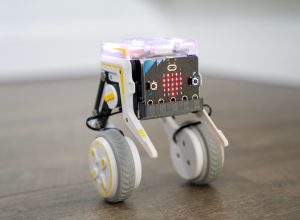The emergence of the metaverse, a virtual world where people interact, work, and engage in various activities, has created new challenges in terms of identity verification. As individuals immerse themselves in this digital landscape, ensuring trust and security becomes paramount. This article explores the importance of identity verification in the metaverse, the existing methods employed, and the potential future developments that can enhance trust and mitigate risks in this virtual realm.
Understanding Identity Verification
Identity verification is the process of confirming that an individual’s claimed identity matches their true identity. In the metaverse, where anonymity and pseudonymity prevail, verifying one’s identity is crucial for establishing trust, preventing fraud, and ensuring the safety of participants. Traditional forms of identification, such as passports or driver’s licenses, are insufficient in this virtual realm, necessitating innovative solutions.
Current Methods of Identity Verification
In the metaverse, several methods of identity verification are being utilized to authenticate users and establish credibility. One common approach is the use of biometric data, such as facial recognition or fingerprint scanning, to link a physical identity to a virtual avatar. This method offers a high level of security but raises concerns about privacy and potential misuse of personal data.
Another method involves the creation of digital identity credentials, stored in blockchain or decentralized systems. These credentials serve as a verifiable proof of identity and can be accessed by authorized entities. Blockchain technology, with its decentralized nature and immutability, provides a promising foundation for secure identity verification in the metaverse.
Furthermore, social reputation systems and user ratings are employed to assess an individual’s credibility based on their past behavior and interactions within the virtual world. These systems allow users to build trust over time and can be integrated with identity verification processes to establish a comprehensive trust framework.
Future Developments and Challenges
The future of identity verification in the metaverse holds exciting possibilities. Advancements in artificial intelligence and machine learning can enable real-time facial recognition algorithms, making identity verification seamless and efficient. Additionally, emerging technologies like decentralized identity (DID) and self-sovereign identity (SSI) offer the potential for individuals to maintain control over their personal data while securely verifying their identity in the metaverse.
However, challenges remain. Balancing privacy concerns with the need for trust and security is a delicate task. Striking the right balance will require collaboration between industry stakeholders, policymakers, and technologists to establish robust regulations and frameworks that protect user privacy while enabling effective identity verification.
Furthermore, addressing the issue of identity theft and fraud within the metaverse is crucial. Cybercriminals can exploit vulnerabilities, manipulate digital identities, and engage in fraudulent activities. Continuous innovation and proactive measures, such as multi-factor authentication, threat intelligence, and regular security audits, will be necessary to stay ahead of these evolving threats.
Conclusion
Identity verification plays a vital role in establishing trust and security in the metaverse. Employing a combination of biometric data, decentralized systems, and reputation-based approaches, users can authenticate their identities and interact with confidence. As the metaverse evolves, future developments hold immense potential, but they also bring forth challenges that must be addressed. By striking the right balance between privacy and security and adopting innovative technologies, we can ensure that the metaverse becomes a safe and trusted environment for individuals to explore, create, and connect.




